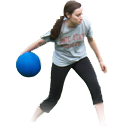
7 Smart Things You Can Do to Proactively Prevent Running Injuries

Nothing gets in the way of a good run like pain. Pain can be acute and stop you right in your tracks or it can be chronic, starting small and gradually getting worse over time without completely going away. The last thing any runner wants or needs is an injury.
Unfortunately, running-related injuries are common in runners of all levels. One research review found that the incidence of a running-related injury among amateur runners was as high as 17.8 for every 1,000 hours of running accounted for. It was significantly lower (7.7) for elite runners, but still a part of the sport. This means running-related injuries are actually relatively common. But what if you could prevent running injuries from happening in the first place?
Most running injuries—like runner’s knee, shin splints, and plantar fasciitis—are the result of overuse, or repetitively putting stress on a muscle or bone, rather than one traumatic wrong move. They can be exacerbated by many things, like a high volume of training or the wrong kind of sneakers. But paying attention to your body and adding a few simple things to your training routine (beyond just logging miles) can help you avoid a lot of these overuse injuries—so that you can keep feeling good and strong as you run and train for your next race.
Here is a list of seven smart things you can do to help prevent running-related injuries. They’re definitely worthwhile for any runner, but especially for anyone who is about to ramp up their mileage (all you people training for a marathon right now, I’m talking to you!).
1. Do glute-strengthening exercises.
Every runner needs a strong set of glute muscles for safe running. The glutes—made up of the gluteus medius, minimus, and maximus—are critical for single-leg stability and power while running. It sounds sort of weird but running is actually a single-leg sport. You take off and land on one leg at a time. Which means you need to have good dynamic balance on each leg to prevent injuries up and down the body. The gluteus medius is largely responsible for hip abduction (moving the leg away from the center of the body), which makes it key for single-leg stability.
A weak gluteus medius can cause the knee to collapse inward (also known as dynamic valgus). Weak gluteus medius muscles are often a precursor to many knee injuries, including ACL and MCL tears or what is known as “the unhappy triad,” the phrase used to describe when the ACL, MCL, and meniscus simultaneously tear. Definitely not something you want to happen.
Try strengthening the glutes with squats, single-leg bridges, clamshells, and banded lateral walks. Pro tip: Do some glute strengthening exercises before every run. This will help prep the muscles to work, and remind you to engage them as you run.
2. Foam roll your thighs and calves.
This simple tool can be every runner’s best friend. Evidence suggests foam rolling can effectively reduce muscle soreness while improving range of motion. Just keep in mind that foam rolling is a temporary treatment for tightness and discomfort, not a solution that addresses why it develops in the first place. By all means, foam roll that tight fascia (connective tissue that attaches your muscles to tendons and bones) to promote blood flow and flexibility of the soft tissue in your tight thighs and calves. But don’t forget to also strengthen those glutes (Do I sound like a broken record yet?) so you can lessen the strain you’re putting on your muscles.
3. Find—and stick with—the right running shoes for you.
Unfortunately, the main criteria of the right shoe isn’t how cool it looks, but how well it supports your body throughout many miles of impact. Finding the right running shoes is often the result of many training miles, and trial and error. Usually, it takes more than five minutes of jogging on a treadmill at a running store to identify the right footwear.
To get an idea of what shoes to try, get to know your feet. Do you overpronate (your feet roll inward significantly as you run) or supinate (feel don’t roll in enough)? Are you a toe runner or a heel striker? Look at the bottom of your sneakers—where are they most worn down? Some sneakers have more arch support than others, some have a wider outflare at the heel for improved stability. As much I love trying out new styles, I find that once I know a brand and style of shoe that works for me, it’s best to stick with it.
4. Build up your mileage slowly.
One common cause of running-related injuries such as shin splints is doing too much too soon. According to research, avoiding sudden large increases in intensity, frequency, and/or duration of exercise is the best way to avoid shin pain. The same slow and steady approach can help you avoid other overtraining injuries. Balance training runs with low-impact core and hip-strengthening exercises. Try cross-training workouts like cycling or swimming. By continuing to strengthen your muscles and improve aerobic capacity, your running can still improve without your feet having to hit the pavement quite as often.
5. Work on core strength.
Having a strong core helps improve your stability and keep your body balanced and upright—important for any sport, and especially a single-leg one like running. The research is minimal, but there is evidence that suggests that the stability and postural control core strength provides can reduce the risk of running-related knee pain. One study found that specifically combining hip and core strengthening can make a difference (which brings us back to the importance of the almighty glutes).
Keep your core game strong by doing some core exercises such as forward planks, side planks, leg extensions, and dead bugs. (Here’s a five-minute core workout specifically created for runners that you can try.) Don’t rush these exercises—rather, move through them slowly and with intention, thinking about fully engaging the core muscles with every rep.
6. Stretch after a run if you’re feeling tight.
When you run, your muscles are repeatedly lengthening and shortening. If they’re tight, they can cause pain or limit optimal joint mobility, especially if you’re running for a significant amount of time. While the evidence on stretching before and after running is mixed, I have found that stretching—especially after a run—can help my patients recover and feel better the next day.
Usually when you run, you can feel which parts of your body are tighter than others. If you pay close attention, you might notice how this limits your movement when running. For someone who sits all day at a desk job, for example, I recommend doing some hip flexor stretches, like a lunge with overhead reach, before and after running. This will open up the hips and help you activate the glutes. For someone prone to plantar fasciitis, I’d recommend stretching your calves.
Despite inconclusive evidence that stretching can enhance your performance as a runner, there is no evidence that stretching after a run is can harm your performance. While stretching might not be necessary for every person to do after every workout, I believe the best runners have good mobility and stability. So pairing stretching with strengthening is a great way to encourage good body mechanics and avoid unnecessary straining and injury.
7. Pay attention to your body and what it’s telling you.
Next time you head out for a run, listen to your body. Tune into the muscles in your legs, how your feet feel when they hit the ground, and how strong you feel as you take each stride. Usually, signs of an overuse injury start as a whisper. If that whisper gets louder, listen to it before it starts to become a scream. Check yourself and your training routine—have you been doing some core- and hip-strengthening exercises? Do you need to stretch those hamstrings after your run? Most runners aren’t afraid to run with some pain, and a certain amount of discomfort is normal and OK. But you have to check in with your body, even if your heart wants to push through the pain, if you want to avoid actually getting injured.
Listening to your body also means taking a day (or multiple days) off when you need it. Setting aside time to rest and recover—and sleep!—is essential for giving your hard-working muscles and tendons a break. Don’t think of rest days as lost time, but rather as an important part of a well-rounded training plan. You need them just as much as you need your long runs and cross-training workouts.
While it’s impossible to foolproof your running and completely protect yourself from injury, you can be proactive in preventing common aches and pains from turning into a real problem. While some injuries may be unavoidable, many can be sidestepped if you remember to run smart, and not just fast.
Fitness||




